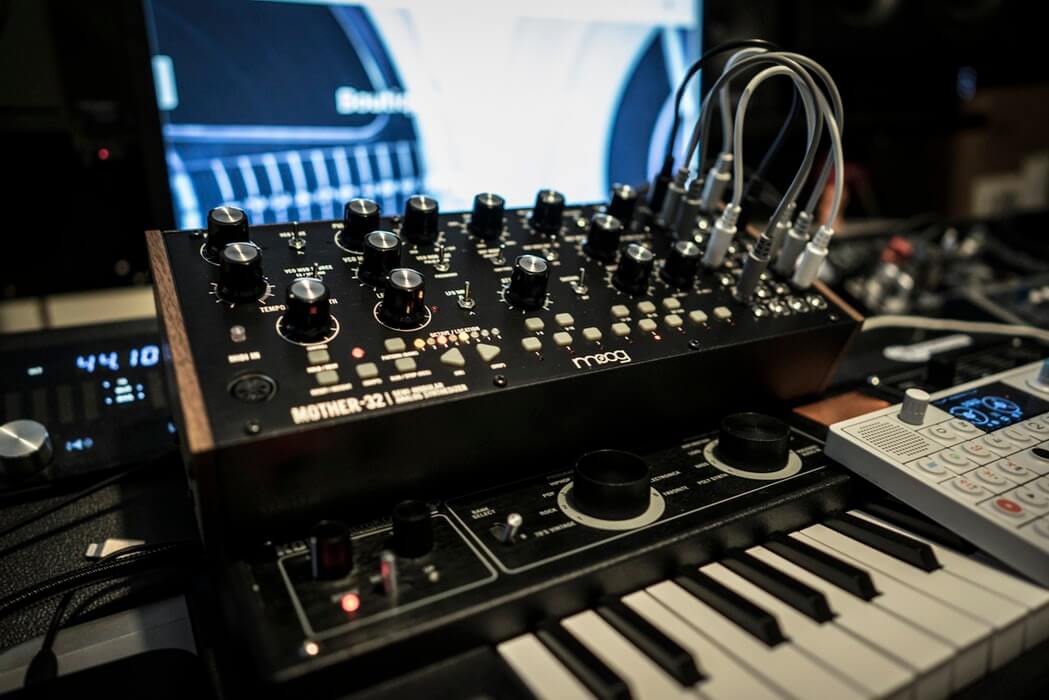Minor Chord Progression
To understand how to create a Minor Chord Progression, we need to understand what a Minor Chord is, and what a diatonic chord is. Diatonic chords are the chords that are derived from the notes of a key. There are 7 notes in each key.
Dia-what?
A diatonic is a note that sounds good with your root note. It takes a bit of time to learn the diatonics for each key, which is something we’ve tried to help with in Captain Chords – our composition software. We automatically show all the diatonic chords so you can try them out at the touch of a button.
Some of the diatonic chords for your chosen key will be Major chords. That’s cool, but if we’re trying to understand a Minor Chord progression, let’s focus on the Minor chords.
When in Rome…
You may have noticed that chord progressions are often written in Roman Numerals, like this: i – iv – ii – i
It’s a simple way of explaining the relative relationship of the chord progression. When the numerals are lower case, that tells us they are Minor. Capital letters i.e. I – IV – II – III denote Major Chords.
Chord 1 – written as i or I – is simply the root note of your song. So if it’s A Minor, i = A Minor. The chord that is iv – or fourth away – to A Minor is D Minor. A, B, C, D… that’s 4 notes… see how it works?
Root Note: A
| Chord | Major | Minor |
|---|---|---|
| A | I | i |
| B | II | ii |
| C | III | iii |
| D | IV | iv |
| E | V | v |
| F | VI | vi |
| G | VII | vii |
Write chords faster with Captain Chords
- Write your own chord progressions
- Apply rhythms to your chords
- Set your Key and Scale for the entire song
- Explore different chords and discover your favorite combinations
- Compose music and write your own songs
- One touch plays 3 notes of the chords
The musician’s code
Using numerals means you can transpose – or shift – the root key to any other note and maintain the chord progression. It’s the code musician’s use to speed up the writing process and communicate ideas more effectively.
When talking about a Minor Chord Progression, we aren’t necessarily talking about a specific root note, so using numerals is a really great way to communicate the progressions.

Photo by Adi Goldstein on Unsplash
Using only Minor Chords usually sounds sombre, sad and melancholic, but that doesn’t mean they can’t also be great for dancing. Check out the songs below for some brilliant examples of minor chord progressions killing it:
Major Artists – Minor Chords
Max Romeo – Chase the Devil
Chords: Am / Em / Dm / Am (i – v – iv – i)
Kelis – Trick Me Twice
F# min / Em / Bm) ii – ii – iv
These progressions are entirely in a Minor Key and uses solely Minor Chords. Try and recreate it on your DAW or keyboard (Captain is really handy for doing this), then try replacing some of the chords with Major chords – you’ll immediately notice a difference in the emotional quality.
Pro Tip
When writing Minor Chord progressions, try jumping up and down octaves occasionally. This can provide some big, powerful impact, without using a Major Chord for that purpose. It keeps the emotional quality the same but adds drama.
Here’s a Minor Chord Progression played in Captain Chords
